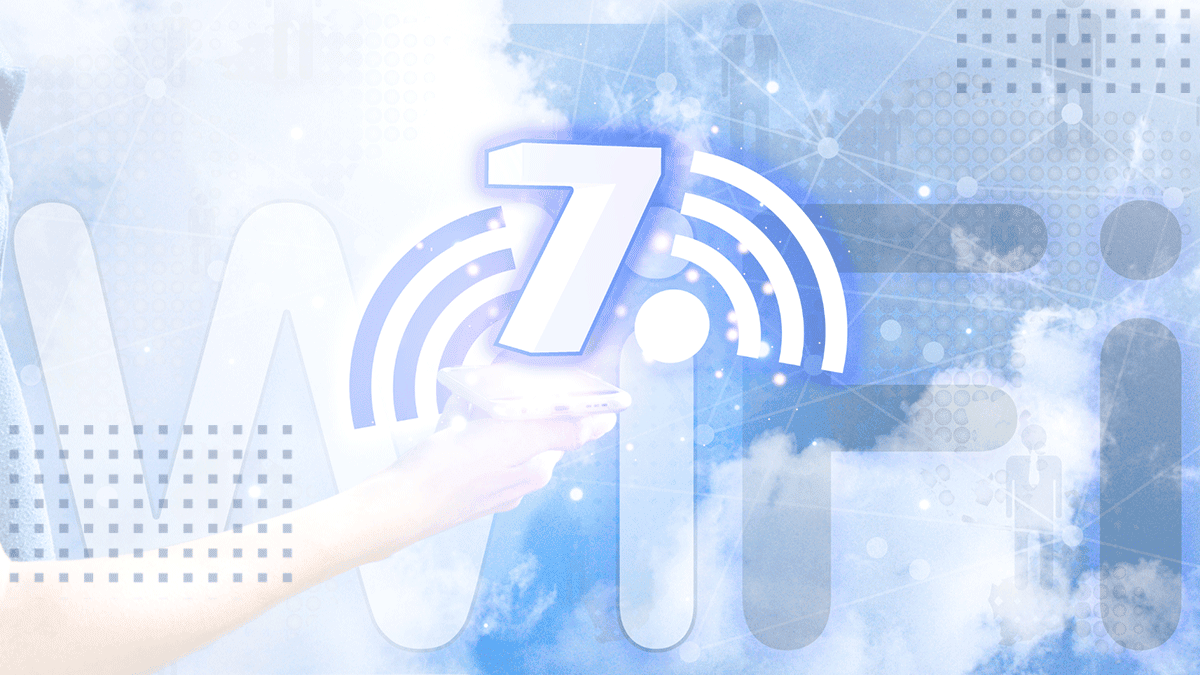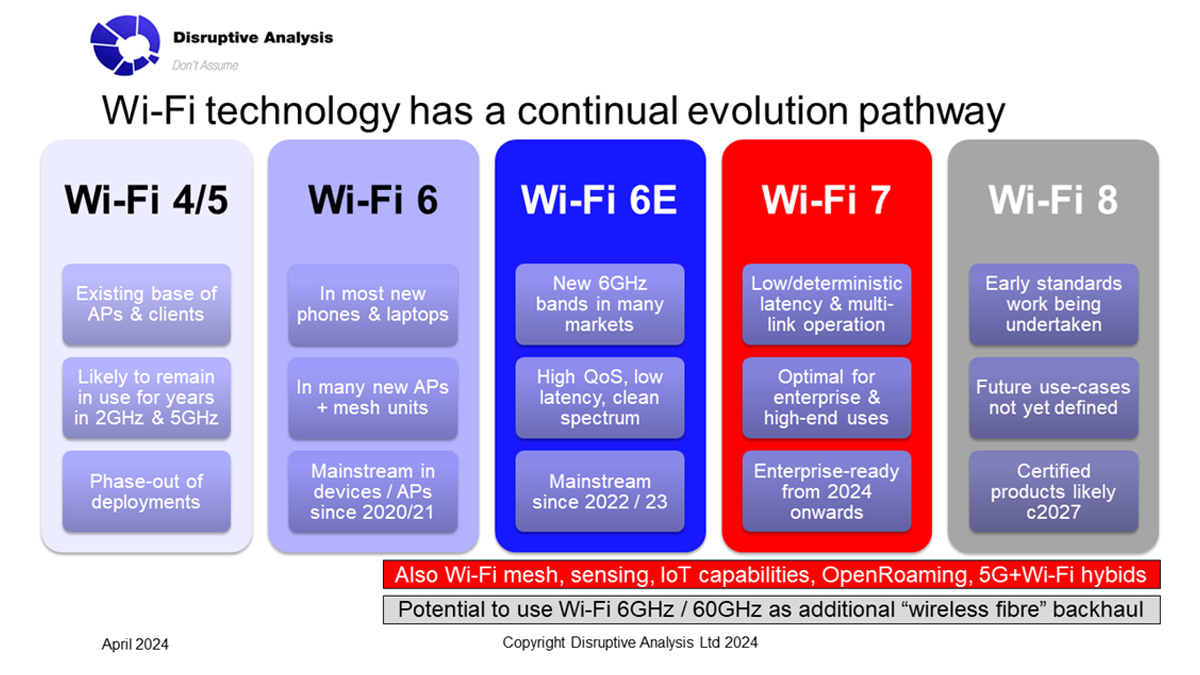When Should Service Providers Consider Wi-Fi 7? The Time is Now

2025 should be the year that Wi-Fi 7 makes significant strides in adoption by broadband operators and service providers. The demand for Wi-Fi 7 capabilities aligns with adjacent trends, including new devices and applications, accelerating fiber adoption, new policies on broadband regulation (such as 6GHz spectrum availability), competitive factors, and evolving user expectations.
Today, Wi-Fi 7 is about seven months into its “official” Wi-Fi Alliance certification. On the device side, we can expect most mid-to-high-end smartphones and laptops to embrace Wi-Fi 7 in the coming year, especially in markets with some or all 6GHz bands available for unlicensed use (most of the Americas, Europe, and much of developed Asia). While other devices will likely take longer, we should start to see home adoption for high-bandwidth, low-latency applications such as gaming, augmented reality (AR), and virtual reality (VR).
For service providers, the timing of when to introduce a new Wi-Fi generation is always a hard decision. It’s beneficial for early differentiation and market leadership. But there’s usually a cycle or two for new equipment and chipsets to mature and pricing to stabilize.
Benefits of Wi-Fi 7
Compared to previous versions, Wi-Fi 7 more specifically emphasizes demanding applications, multi-device robustness, and critical use cases (such as telemedicine or home networking). While theoretical maximum throughput speeds are improved, the primary focus is real-world performance and mitigating radio problems like interference. It also enables up to 500 devices per access point (AP) using better simultaneous beamforming, which is especially beneficial for multi-dwelling units (MDUs) or densely populated environments.
Other key aspects of Wi-Fi 7 include:
- Up to 320MHz channel width: With the addition of 6GHz, maximum data rates can be 5Gbps or more.
- Multi-link operation (MLO): This intelligently combines the 6GHz, 5GHz, and 2.4GHz bands. They can be bonded together and used for different applications or in parallel for optimal reliability. MLO can reduce latency between 80% and 90% and allow for “make before break” connections as mobile users move between APs.
- Deterministic latency: Wi-Fi 7 better supports time-sensitive (or deterministic) latency, which is beneficial in industrial settings or for consumer electronics sensor readings, remote computing, and rapid actions for gaming, AR/VR, or other applications.
- Multiple resource units (RUs) and puncturing: Improves radio resource efficiency by working around occupied parts of a large channel rather than making the entire channel unavailable.
- Emergency preparedness communications services (EPCS): Obtain priority access to Wi-Fi connections for first responders.
Use Cases for Wi-Fi 7
The main use case is “even more of the same.” Homes have more screens and cameras, more video streaming and interactivity, and higher framerates and resolutions. Even mid-tier consumers commonly have tens of Wi-Fi devices in their homes, often used concurrently, including 4K TVs, security systems, and a wide variety of smart automation products with cloud control and data storage.
Although early metaverse hype has cooled off, interest in immersive AR/VR experiences continues to grow, often on everyday devices rather than goggles or glasses. Prominent companies (like Apple) are still at an early stage. While Disruptive Analysis remains skeptical that extended reality (XR) will become a primary interface—especially when outdoors—home and indoor applications have more potential and will be primarily Wi-Fi based. The space could show sudden and surprising growth, especially if innovative developers start to create unique experiences.
Another trend favoring Wi-Fi 7 is the development of laptops and smartphones capable of artificial intelligence (AI). While AI may not drive huge increases in data traffic volumes, some new applications may be more latency-sensitive. This will be significant over the next 12-18 months and many devices will be equipped with Wi-Fi 7 capabilities. It’s expected to be a major replacement cycle for the last cohort of products bought during the pandemic.
Roll Out and Adoption of Wi-Fi

The current trajectory suggests many service providers will align Wi-Fi 7 with their broader offers, especially at the premium end of the market. Specific segments such as large families, remote workers, hardcore gamers, and small businesses with demanding applications will likely take the lead. There’s also potential for wholesale or open-access fiber operators to offer managed Wi-Fi as a value-add for their smaller retail partners.
The next phase will likely involve MDUs, hospitality, and sectors benefitting from improved performance and interference management. Premium apartment blocks, luxury hotels, and higher-tier student accommodations make sense, especially if residents are heavy streamers or gamers.
Wi-Fi 7 will also be strongly aligned with high-end FTTP bundles. Adding a premium gateway or access point to a top-tier broadband package (perhaps symmetric 2Gbps) could help XGS-PON operators differentiate against slower-speed rivals. While applications demanding those throughputs will take time to emerge, customers often use speed tests to check that performance lives up to the promises.
Finally, state-of-the-art Wi-Fi could be essential in extending policymakers' visions as they determine whether national gigabit/fiber strategies should end at passing a subscriber’s home or extend beyond the front door.
In summary, service providers should start evaluating and planning for Wi-Fi 7 today if they haven't already. While Wi-Fi 7 won’t be implemented and deployed across the whole subscriber base, it offers significant futureproofing options. It also provides premium positioning for key customer segments so service providers can differentiate effectively.
Ready to get started? Dig in with this Calix eBook, "Operationalizing Wi-Fi 7: Strategies for Seamless Deployment and Management."
Related articles




